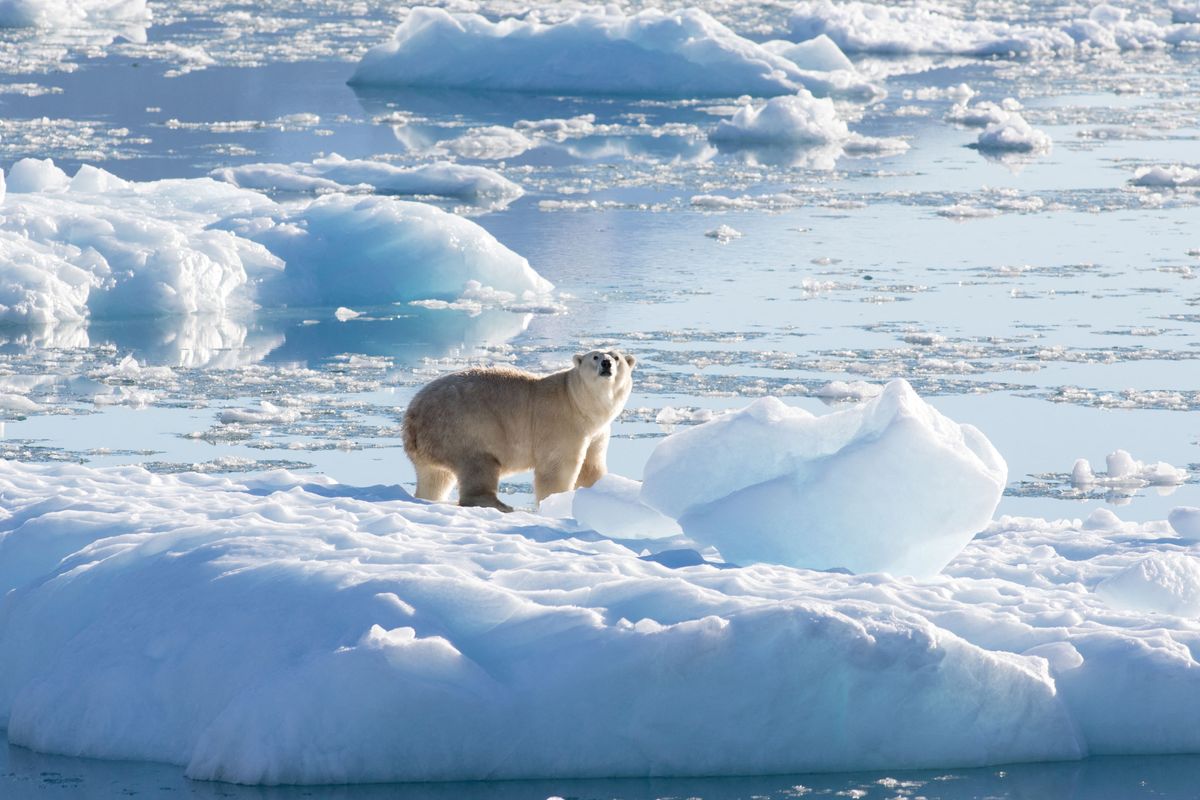Arctic sea ice is melting, and it may be gone sooner than we thought
A new study now says that the first summer to melt pretty much all of the Arctic’s floating sea ice could actually happen between 2030 and 2040.

A few minutes every morning is all you need.
Stay up to date on the world's Headlines and Human Stories. It's fun, it's factual, it's fluff-free.
The backstory: Arctic sea ice levels are at their lowest in September, just as summer comes to a close there. With climate change causing all kinds of chaos in the Arctic, though, we’re looking to a September when there won’t be any sea ice at all. Since satellite records started in 1979, summer Arctic ice has been disappearing by 13% every decade.
Once it’s all gone, the Arctic’s permafrost will begin to thaw, releasing stored greenhouse gases into the atmosphere and causing the Earth to heat up even faster. And the dark ocean becomes exposed as the ice melts, absorbing more heat from the sun, which will only cause the Arctic to heat up faster, too. This could also weaken the jet stream, causing more extreme weather events in different parts of the world.
More recently: The most recent landmark report from the UN-backed Intergovernmental Panel on Climate Change (IPCC) suggested that the Arctic region will probably start having summers without sea ice by around 2050 if we keep up with high levels of greenhouse gas emissions. Based on the IPCC’s models, lowering our greenhouse gas emissions could push that milestone back a bit.
The development: A new study now says that the first summer to melt pretty much all of the Arctic’s floating sea ice could actually happen between 2030 and 2040 – at least a decade earlier than the IPCC estimated. The study also shows that this climate change event could happen even if the whole world dramatically cuts greenhouse gas emissions. And, spoiler alert, it’s not looking likely that would happen anyway since most estimates show we aren’t really doing enough to hit those lofty goals to reduce global temperature warming. And, unfortunately, it looks like 90% of that sea-ice melting is from human-caused climate problems. The other 10% can be accounted for by natural causes, like volcanic activity and sun intensity. So, essentially, these scientists are saying that we’ve waited too long, and it’s too late to save the Arctic’s summer sea ice.
Key comments:
“We are very quickly about to lose the Arctic summer sea-ice cover, basically independent of what we are doing,” said Dirk Notz, a climate scientist at the University of Hamburg in Germany and co-author of the study. “We’ve been waiting too long now to do something about climate change to still protect the remaining ice.”
“As scientists, we’ve been warning about the loss of Arctic summer sea ice for decades,” said Notz. “This is now the first major component of the Earth system that we are going to lose because of global warming. People didn’t listen to our warnings.
"These results emphasize the profound impacts of greenhouse gas emissions on the Arctic and demonstrate the importance of planning for and adapting to a seasonally ice-free Arctic in the near future,” the study, published in Nature Communications, wrote.




Comments ()